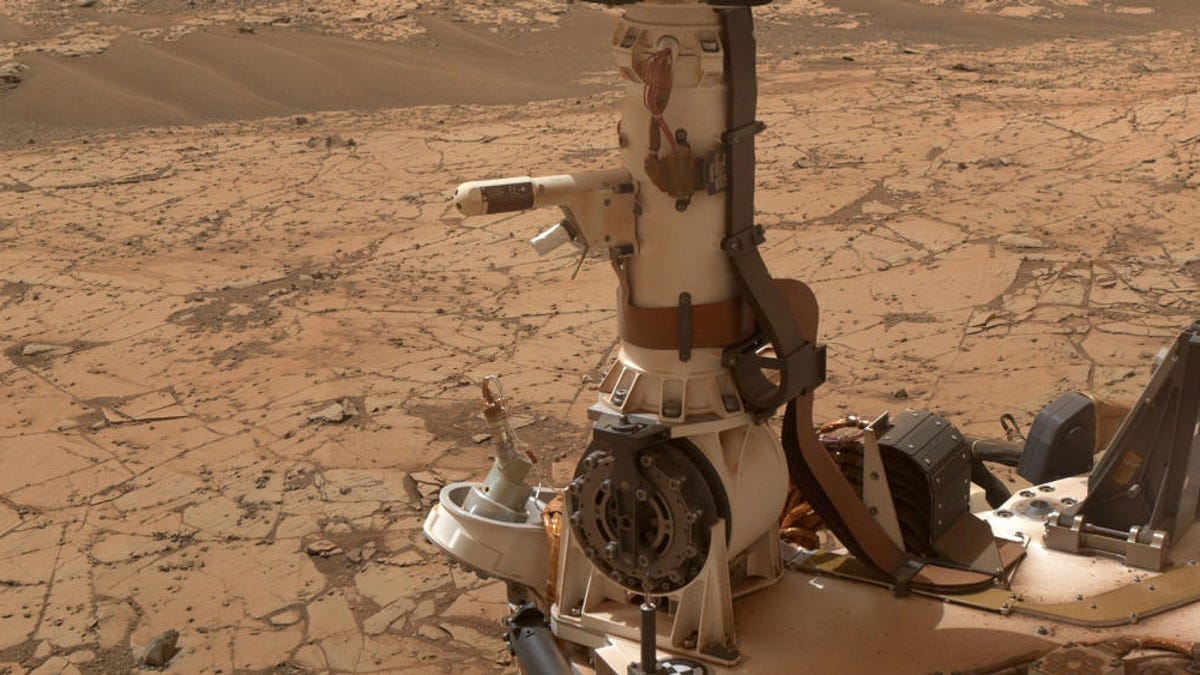Liquid water on Mars right under rover's nose?
We've known for some time that the Red Planet has frozen water and likely once hosted massive oceans, but it turns out Curiosity may not have to dig too deep to wet its whistle.

At long last, researchers on the Curiosity Mars rover's science team believe they have evidence that there is liquid water on the Red Planet, lurking just beneath the surface of our neighbor's rouge surface. The water in the Martian soil seems to gather intermittently and is a very salty brine, making it perhaps suitable for everyone's favorite retro pet -- sea monkeys! Very, very hearty sea monkeys that could withstand the superharsh environment on the fourth planet, that is.
In a nutshell, researchers used more than a year's worth of the rover's temperature and humidity measurements on the planet to determine that conditions were good during some Martian nights for a liquid brine to form -- those charming sea monkeys you may have known in your youth were actually just common brine shrimp, FYI.
This is all possible thanks to perchlorate, a type of salt found on Mars that has two helpful qualities -- it is essentially able to lure the water out of thin Martian air and also lowers its freezing point, forming a brief, wet overnight party beneath the surface that then dries up again in the morning when the sun heats things up.
The possible existence of such briny liquid on Mars has long been discussed, but it has been assumed that the best conditions would exist closer to the poles rather than at Curiosity's location nearer the planet's equator, where temperatures are higher. It still makes sense that the odds of finding brine in higher Martian latitudes are even more probable.
Still, however intriguing the idea of intermittent salt water gatherings on Mars, they aren't likely to be very lively puddles.
"Conditions near the surface of present-day Mars are hardly favorable for microbial life as we know it," Javier Martin-Torres said in a statement. Martin-Torres is the lead author of a paper on the research that was published this week in the journal Nature Geosciences. He's also a member of Curiosity's science team. "But the possibility for liquid brines on Mars has wider implications for habitability and geological water-related processes."
In other words, for the eternally hopeful, the knowledge that deposits of liquid water, even those briny enough to pickle a Martian's toes, exist on Mars is a baby step in the search for possible life on today's Red Planet.
But though Curiosity may go down in history as the first successful dowser on Mars, there's still the issue of the horrid radiation that bombards the planet, making it impossible for all forms of life to exist on the surface, or at the shallow depths that can host the brine. Then again, if crazy life forms like the tardigrade can exist in extreme conditions including ultracold and high-radiation environments, then perhaps mutant, pickled sea monkeys from Mars aren't so far fetched.

